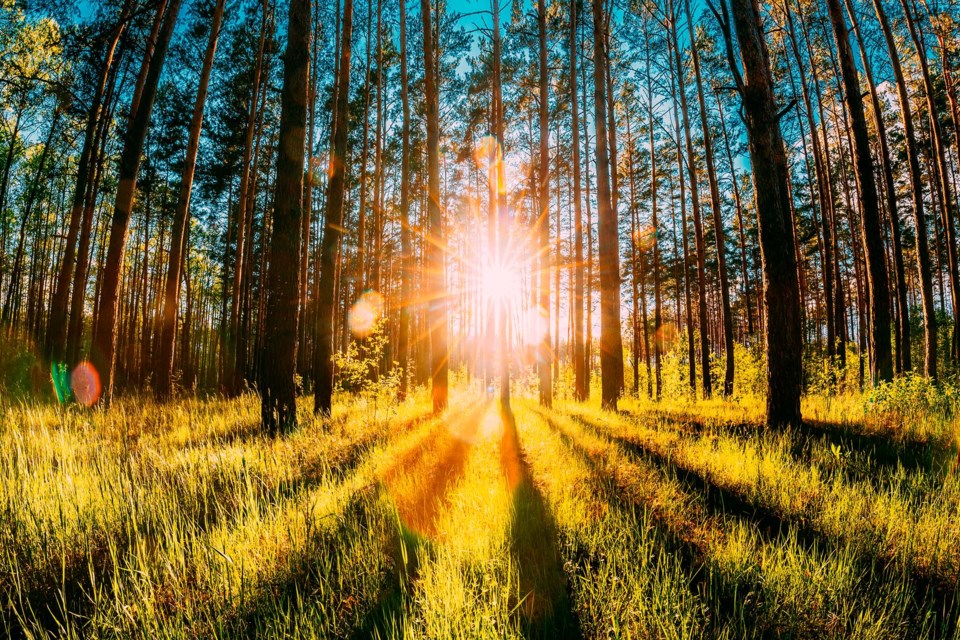As you read through the Bible, you notice three very real, beautiful and symbolic gardens. The first appears in the beginning of history, the second at history’s hinge, and the third at the very end. Let’s find out where these gardens are located, and what they mean.
The Garden of Eden
We find this garden in the first book of Scripture, Genesis (meaning “Beginnings”). “Now the Lord God had planted a garden in the east, in Eden; and there he put the man he had formed.” (Genesis 2:8) It was probably located in the Babylon region of Asia which today would be near Iraq and Kuwait (the rivers Tigris and Euphrates are mentioned which help us locate it). There were many trees in this garden. Two were special — “In the middle of the garden were the tree of life and the tree of the knowledge of good and evil.”
This garden was particularly beautiful because it existed before human sin entered the world. It was home to the first human beings whom God created. Adam (meaning “man” in Hebrew) and Eve (meaning “living” in Hebrew) were the first couple. For a short time, they enjoyed this pristine garden full of good things to eat and a whole host of vegetarian animals (which didn’t eat them). They were in close fellowship with their Creator and were sublimely happy. “The man and his wife were both naked, and they felt no shame.” (Genesis 2:25) They had nothing to hide from God or each other.
Then the tragic occurred. They were tempted to disobey God and succumbed to it. As a result, they were permanently expelled from this garden. Eden ceased to exist (at least in its original state of perfection).
The Garden of Gethsemane
Fast forward to first century Israel. I call this “the hinge of history” since it separates the era called BC (before Christ) and the era AD (anno domini or “in the year of the Lord”). Unlike Eden (whose exact location no one knows), we know exactly where this garden is located. It’s found at the foot of the Mount of Olives which leads into the Kidron Valley and into the eastern side of Jerusalem.
It too is a beautiful garden full of trees, especially olive trees. The name “Gethsemane” means “oil press” which suggests that the farmer who owned the olive trees had built a press to make olive oil. It was in this garden that Jesus and his band of twelve would often overnight when visiting Jerusalem.
It was here on that fateful night before the Jewish Passover that Jesus had been arrested by the Jewish religious authorities. “Then Jesus went with his disciples to a place called Gethsemane and he said to them, ‘Sit here while I go over there and pray.’” (Matthew 26:36) While his disciples slept, Jesus agonized in prayer even to the point that “his sweat was like drops of blood falling to the ground” (Luke 22:44)
Jesus knew what lay ahead and the thought of taking on the enormity (and depravity) of all human sin crushed his sinless soul like an olive press. You could call this garden “Eden Resolved” because man’s sin problem (which began in Eden) now had a solution. Gethsemane still exists today and some of the ancient, gnarled olive trees date back to the days of Jesus.
The Garden in the New Jerusalem
Finally, we come to another beautiful garden at the end of Scripture. It’s part of a city called “the New Jerusalem” which descends from heaven. Like Eden, it’s perfect. In fact, you could call it “Eden Restored”.
We read about it in the last book of the Bible — Revelation (chapter 22). Like the previous gardens, it contains trees. One of those trees is called “the tree of life”. This is the same name given to one of the special trees in Eden. The apostle John records, “On each side of the river stood the tree of life” and a few verses later, “Blessed are those who wash their robes, that they may have the right to the tree of life and may go through the gates into the city.” (Revelation 22:2,14)
There you have it. Three beautiful gardens spaced throughout the Bible and human history with an equally beautiful balance and symmetry. One garden tells us how we all began (and messed up). One garden tells us how God fixed it. And one garden tells us what lies before us if we believe and truly want it.
Rob Weatherby is a retired pastor.

